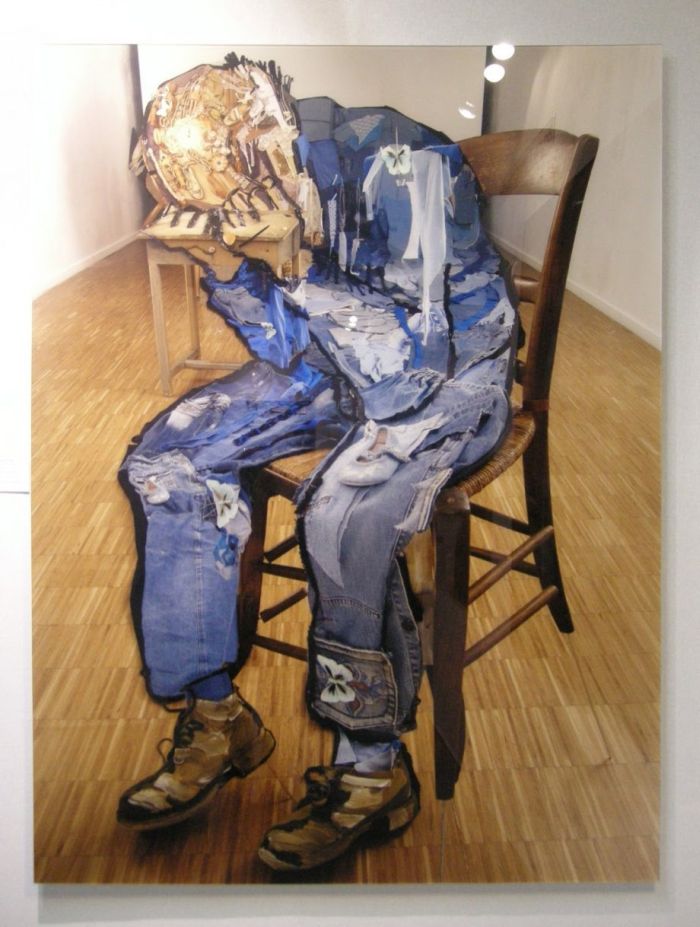|
|
Anamorphosis Portrait Art By Bernard Pras
|
Pras is not the first assemblage artist – for that, you have to go back about 450 years to Milan, Italy, and a talented painter named Giuseppe Arcimboldo (1527-93). Arcimboldo, unusual for his time, painted portraits that seemed normal from a distance but upon approaching, revealed themselves to be skilfully composed congeries of objects. The most famous examples of his technique are four generic portraits from 1573 named for each of the four seasons and assembled from plants and other items corresponding to the time of the year. Arcimboldo was exposed to a new generation of admirers in the mid-1970s when his painting Water was used as the cover art for the album Masque, the third studio album by the rock group Kansas. Just how much did Arcimboldo influence Pras? Only he can say, but it’s certain that Pras thought enough of Arcimboldo to produce a composition based on one of his iconic works.
Anamorphosis is the art of stacking objects on a piece of canvas or a photograph, and Pras is a master at creating sum-thing special from a whole lotta parts. While Pras’ technique is most often described as anamorphosis, it can embody aspects of Assemblage Art and Collage. Pras also allows his sense of humor to shine out from his creations. His use of toilet paper rolls in the portrait of the French ruler Louis IV inspired by Royale brand bathroom tissue. Modern pop culture has proven to be a fertile field for Pras as he has gone to the well time and again in recent years, revisiting cultural icons such as Bruce Lee and the Catwoman from the Batman comics and films. Pras also takes advantage of his medium, often producing multiple takes on a single subject’s image source. Even Che Guevara, thought to be an untouchable symbol of the 1960s counter-culture, undergoes the Pras treatment. Note the artist’s use of toy guns and a red toy sheriff’s star in the Che collage, which evoke the violence of the communist revolutionary’s death as well as the innocence of the times in which many of his admirers lived. In Mao and Marilyn – cultural opposites made equal in the eyes of Bernard Pras. The source photos Pras bases his anamorphosic reproductions on also couldn’t be more different: the official Red Chinese photo portrait of Mao Zedong and Andy Warhol’s Marilyn Diptych, his 1962 tribute to Marilyn Monroe. The work titled “Geisha” shows Pras at his most playful, employing Japanesque objects such as fans and seashells to enhance the atmosphere of his chosen subject: a classic Japanese geisha girl. One of the most startling features of the piece is the use of a vinyl phonograph record to act as a portion of the girl’s hair – the multiple parallel grooves of the deep black vinyl ape the textured lacquer hairdo. Even esteemed physicist Albert Einstein’s much publicized 1951 photo showing the scientist pranking pursuing paparazzi. Pras version, though still easily recognizable, appears to trade Einstein’s humorous intent for a darker, more ominous quality that reflects today’s more distressing geopolitical reality.
|
|









